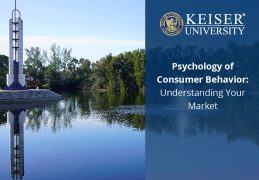The education system is on a precipice. As teachers and staff work to manage classrooms, empower their students, care for their emotional well-being and address behavioral issues, they are relying more heavily on their leadership for counsel, guidance and support. At the same time, those in education leadership are often balancing the demands of administrators or boards with the needs of their staff.
As a result, effective leadership in education has never been more important. If you are considering a career as an educational leader, now is the time to begin fine-tuning those leadership skills as you decide what type of leader you want to become.
Educator Leadership in Education
Leadership in education is most often associated with administrators at school buildings or within a school district. Common leadership positions include principals, deans, superintendents and provosts. However, leadership in education can extend beyond these traditional positions. For example, a teacher may not be in a managerial role, but they may be considered a leader among their peers due to their effective teaching style or their ability to mentor other educators.
Leadership in education refers to any professional who prioritizes student learning and improves the atmosphere in the building or in the organization. Leaders in education are willing to guide, nurture and support other members of the team, and may be involved in day-to-day decision-making s or I in long-term planning. In an increasingly complex environment, an effective and forward-thinking school leader is invaluable.
Importance of Leadership Styles
Leadership styles in education are essential because they allow individuals to build and utilize their own unique skills to develop into strong leaders, and to develop other styles as they grow professionally. A strong leader is confident and self-assured and knows how to rely on their personal strengths and professional skills to bring out the best in those around them. Educational leaders who recognize and employ their own specific leadership style are better able to:
- Create a safe and secure school environment in which students respect their teachers and peers.
- Assist teachers with classroom management, ensuring that teachers feel supported as they create a positive learning environment for their students.
- Develop effective solutions that benefit everyone in the school community, including students, families, teachers and staff members.
How to Decide on a Leadership Style
As you imagine the type of leader you want to be in an educational institution, it’s important to be aware that there are several distinct leadership styles. In most cases, people feel that they connect strongly with one type of style or another, but many leaders effectively blend techniques from the various styles to create a leadership identity that feels right for them. According to the Principal Playbook, you can decide on a leadership style by:
- Being aware of your strengths and natural leadership qualities. Your personality will have a significant influence over which leadership style you connect with the most.
- Learning more about the common leadership styles in education. There are nine distinct leadership styles in education, each of which emphasizes a different approach to leading within a school environment. The ability to differentially employ multiple styles depending on the situation or need is something that every leader can aspire to and grow into.
- Taking on leadership positions in the initial stages of your career to begin honing your leadership skills. These may include taking the lead on a staff committee or mentoring a student club at your school. These are smaller leadership roles that allow you to become more confident in your abilities.
Common Leadership Styles for Educators
Whether you aspire to be an elementary school principal or would like to be an administrator of an entire school district, you will find that there are several leadership styles in education that you can adopt. You may find that you connect with one of these styles, or you may choose to transition between several styles depending on the circumstances. The most important thing you can do is learn about these various learning styles and adopt them according to your personal strengths and professional goals.
1. Transformational Leadership Style
The transformational leadership style relies heavily on encouragement to inspire others to do their best and continue reaching for their goals. It is a style the resonates with teachers, as all teachers want their students to become the best version of themselves.
In addition to providing support and encouragement, transformational leaders also focus on skill development. They want to empower those around them to develop the skills and techniques they need to reach their personal goals.
You may be a transformational educational leader if: · You believe in the power of a growth mindset.
- You genuinely feel that there is good in everyone.
- You enjoy developing strong relationships with those around you.
2. Instructional Leadership Style
Instructional leadership is considered to be one of the most effective types of leadership styles in education. This leadership style emphasizes the importance of providing instruction directly to students and teachers, which is why it is most common in the education field.
An administrator who has adopted the instructional leadership style knows that teachers do not need to be micromanaged to be effective in their classrooms. They know that they have hired qualified and experienced teachers with the skills needed to prioritize student learning. By giving teachers autonomy, instructional administrators earn their respect and admiration.
You may be an instructional leader if:
- You prefer looking at the larger picture.
- You enjoy focusing on student growth and development.
- You are naturally confident and open-minded.
3. Constructivist Leadership Style
The constructivist leadership style is ideal for an educational leader because it is focused more on empowering others to hone their critical thinking skills and come to their own conclusions, rather than having a problem solved for them.
An administrator who is a constructivist leader is willing to let their teachers collaborate and work together to produce solutions that benefit both students and staff members. Teachers who enjoy working with this style of leader often transmit this same preference to their own students, allowing them to connect and collaborate with one another as they work toward a solution to problems. Constructivist leaders give those around them the chance to build confidence in their decision-making skills and learn first-hand how to collaboratively work toward solutions.
In today’s educational environment, soft skill development is more important than knowledge acquisition in many instances. As a result, the constructivist leadership style prioritizes those skills and empowers those around you.
You may be a constructivist leader if:
- You believe that the process is sometimes more important than the outcome.
- You enjoy collaborating with others and working toward a common goal.
- You are motivated by finding innovative solutions to challenging problems.
4. Democratic Leadership Style
Democratic leaders are particularly valuable in education, where there are many key players working together to create an engaging learning environment for all students. The democratic leadership style prioritizes collaboration above direction, and a democratic leader seeks feedback before making a final decision.
A principal who adopts the democratic leadership style, for instance, is more likely to involve teachers and staff members in the decision-making process. They will bring together diverse groups of people with the relevant skills, information and insight to collaborate on solutions that are best for the school community at large.
The democratic leadership style is also an ideal option for teachers. It empowers the students in the classroom and allows them to feel as if they play a valuable role in classroom life while providing them with practical experience participating in the democratic process.
You may be a democratic leader if:
- You enjoy working with others.
- You prefer to collaborate when it comes to decision making.
- You value engagement.
5. Emotional Leadership Style
Sometimes referred to as affiliative leadership, the emotional leadership style heavily considers the feelings and needs of others in the decision-making process. It is a powerful leadership style in a school environment in which many students and staff members are learning to manage their own social and emotional health.
The emotional leadership style can be beneficial when managing a crisis or a stressful circumstance, but it often has to be combined with another leadership style to be wholly effective. This is because an individual who adopts the emotional leadership style may feel more compelled to take a passive approach to leadership as they navigate the feelings of others. The leader employing the emotional leadership style might also want to employ the transactional, instructional, or transformational style as a counterpoint.
However, this leadership style can be particularly effective for teachers who are working to manage a classroom of students. Teachers who lead with an emotional style are more likely to be aware of how a student’s outside life is impacting their time in the classroom, and they may be more adept at creating innovative solutions to help them thrive.
You may be an emotional leader if:
- You are self-aware and capable of regulating your emotions.
- You know how to effectively communicate with others.
- You consider yourself to be naturally compassionate or empathetic.
6. Transactional Leadership Style
The transactional leadership style is a traditional approach in which the leader provides instruction to the individuals they oversee with the promise of a reward for doing as they are told. It is a leadership style that provides clarity, but transactional leaders must often blend their approach with another style to be truly effective.
Transactional leadership is particularly powerful in a classroom environment. Teachers who utilize this leadership style can manage classroom expectations by rewarding positive behavior and punishing negative behavior.
You may be a transactional leader if:
- You prefer to provide those around you with clear expectations.
- You are calm and controlled and prefer an orderly environment.
7. Authoritative Leadership Style
The authoritative leadership style is a no-nonsense approach to leadership that can be incredibly effective under the right circumstances. An authoritative leader sets clear expectations with defined consequences for failing to meet those expectations.
The authoritative leadership style is ideal for high-level administrators in education, such as a superintendent or dean of students, as they have many people who rely on them to make decisions and maintain order. Authoritative styles also work well in situations where major change needs to occur, particularly when it relates to faculty or staff failure to perform. The authoritative style can be used to strong effect to make meaningful change, following blending this style with other styles once change has occurred.
You may be an authoritative leader if:
- You communicate effectively.
- You know how to delegate tasks and use persuasion.
- You have a consistent approach to leadership.
8. Servant Leadership Style
Due to the nature of the education field, the servant leadership style is prevalent. A servant leader is one who puts the needs of others before their own, and they feel compelled to lead to serve the community at large.
Servant leaders are aware of when they need to act versus when they need to let others take the reins.
You may be a servant leader if:
- You enjoy working with others.
- You commonly put the needs of others before your own.
- You believe that the community benefits when more people work together.
9. Strategic Leadership Style
A strategic leadership style emphasizes the importance of focusing on long-term goals. A strategic leader not only makes the best decision for today, but they also are constantly looking to and planning for the future.
This leadership style is ideal for those in educational administration, as they are often in charge of day-to-day operations as well as long-term growth and development.
You may be a strategic leader if:
- You have strong critical thinking skills.
- You enjoy data-based analysis.
- You effectively set and achieve both short-term and long-term goals.
Develop Your Educational Leadership Skills at Keiser University Graduate School
At Keiser University Graduate School, we offer a wide range of programs for those who want to advance their career in education. For example, we offer an educational specialist in education leadership degree as well as a Master of Science in Educational Leadership. Both options are skills-based programs that can help you develop an understanding of what is required of an educational leader today.
Request more information about our programs or contact a graduate admissions counselor today to find out which program is best for your personal and professional goals.






 The instructors at Keiser University impacted my life. They believed in my ability to become a great graphic designer, regardless of how I felt about my skills. KU helped to prepare me for the real world and got me to where I am today.
The instructors at Keiser University impacted my life. They believed in my ability to become a great graphic designer, regardless of how I felt about my skills. KU helped to prepare me for the real world and got me to where I am today.
